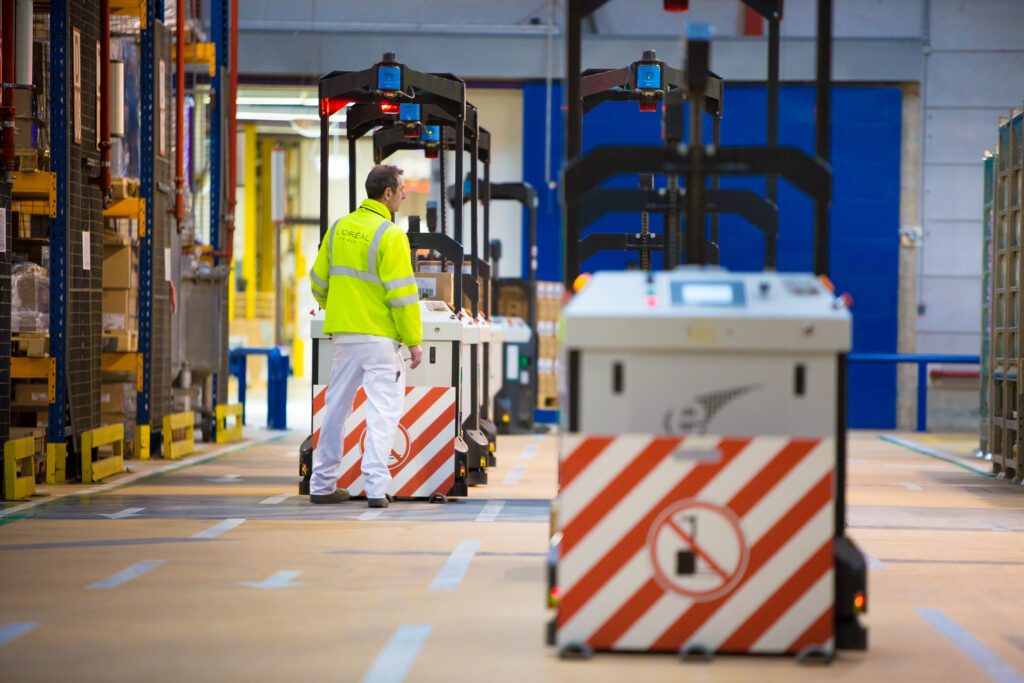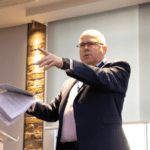In the first of three exclusive articles for SHP examining the components of L’Oréal’s award-winning health and safety system, we look at the fundamental controls mandated for the company’s sites around the world.
L’Oréal, the global beauty and personal care group, whose brands include Garnier, Lancôme, Maybelline and YSL, employs 85,000 people in 140 countries. The key to protecting those people in the company’s factories, laboratories and retail stores from Manchester to Mumbai is a highly-developed system of programmes and initiatives.
The company sets strict global standards for the most severe hazards, but allows national and site-level variations in other parts of the system to allow for cultural differences. Safety and health programmes that deal with personal risk perception, safe behaviour and improving safety culture are introduced when the local workforce’s safety culture is mature enough for these initiatives to be well received and understood.
This means that different parts of the company will be at different stages of development at any time, The same is true for most large organisations but it is explicitly recognised in the L’Oréal system.

Automated Guided Vehicles in the L’Oréal Libramont plant in Belgium. CREDIT: L’Oréal
Three-phase model
L’Oréal’s EHS function uses a slogan which summarises its ambitions: “risk assessment, excellence and beyond”. The phrase also functions as shorthand for the three-stages to full safety maturity across its operations. In this article we will concentrate on that first stage – risk assessment – and its associated programmes, which are the bedrock of protection across the company.
The system is overseen by Malcolm Staves, L’Oréal’s Global Vice President, Health and Safety. Staves reports to the General Manager of Quality, Environment, Health and Safety and works with a central team of six to develop the EHS vision, strategy and governance for the group. He also chairs the EHS Senior Network group whose 19 members include EHS Directors for the company’s five global regions.
At the core of the baseline provision across all sites is risk assessment itself. The Global Hazard Assessment Procedure (GHAP) is used to evaluate major hazards such process safety. Everything else is covered by the Safety Hazard Assessment Procedure (SHAP) tool, used by operational managers to rate to rate risks associated with tasks and equipment on a five-by-five matrix at three-yearly intervals or when circumstances change.
Lifesavers
L’Oréal’s equivalent of the “life-saving rules” that many corporations have introduced to control high-potential consequence hazards such as road risk, work at height and in confined spaces is the LIFE (Life-changing Incident or Fatality Event) programme. Introduced in 2017 the programme sets 270 non-negotiable corporate requirements and defines two levels of hazard. LIFE 1 hazards could cause fatalities and all sites had to implement controls to manage them by 2018 or to stop the activity that presented the risk.
LIFE 2 hazards present risk of serious injuries and must be tightly regulated, with six-monthly reviews of the controls. Malcolm Staves notes that the rules to manage LIFE hazards more than just prevention. “We have strict requirements for emergency response and first aid, which a lot of companies’ life-saving rules don’t cover,” he says.
Though the corporate requirements for LIFE hazard controls are hard and fast, Staves says the centre is open to new ways of controlling the risks they pose and if a part of the organisation can produce an externally audited report showing it has a better way of managing the risk, this is absorbed by the corporate centre and the requirement is adapted accordingly.
Plant life
Equipment safety is a priority for any manufacturing operation. L’Oréal’s insistence on setting its own standards for equipment safety (over and above any national regulations) and checking all machinery meets them before it is put into use.
All new equipment has to meet company standards on issues such as ergonomics and guarding of hazardous moving parts. Potentially hazardous machinery is validated every 24 months by health and safety staff to ensure controls including electrical and mechanical safety, ergonomics, adequacy of documentation and susceptibility to weather damage are up to standard. Another traffic light labelling scheme allows them to pass a machine as safe to operate (green), unsafe and must be put out of use (red) or safe to operate temporarily with additional instructions to the operator to control risks (amber).
Other programmes at the foundational risk assessment level include those for controlling chemical and ergonomic hazards. To control the chemical risks involved in its manufacturing operations,
such as handling nanomaterials in beauty products, L’Oréal uses proprietary chemical risk assessment software which produces a red, green or amber rating for the intended use of any substance, where red prohibits use, green is safe to proceed and amber indicates more controls are needed. Software is also used to simplify ergonomic assessments.

L’Oréal Global VP Health and Safety Malcolm Staves
Ergo Fast, a self-screening tool, is used by employees for first-line assessments. If this flags a hazard, trained professionals will use Ergo Eval software tool and reconfigure tasks involving postures rated 4 or 5 on a five-point scale. The third digital tool is ErgoCapt, a virtual reality simulator that lets managers model the postural effects of proposed task changes before introducing them.
Next time…
In the second article we will detail the programmes that promote the health and safety “excellence” in L’Oréal’s “risk assessment, excellence and beyond” schema. The suite of articles summarises the content of a white paper, L’Oréal, A world-class safety system, which you can download here.
“We are hoping that through this series of articles we will be able to give other OSH professionals ideas of what they can do or change in their organisations,” Evidently, one size never fits all, but by sharing what we do and our experience maybe we can help another company save lives.” Malcolm Staves
Approaches to managing the risks associated Musculoskeletal disorders
In this episode of the Safety & Health Podcast, we hear from Matt Birtles, Principal Ergonomics Consultant at HSE’s Science and Research Centre, about the different approaches to managing the risks associated with Musculoskeletal disorders.
Matt, an ergonomics and human factors expert, shares his thoughts on why MSDs are important, the various prevalent rates across the UK, what you can do within your own organisation and the Risk Management process surrounding MSD’s.




Thank you for this article, great to read what others are doing to help keep workplaces safe.
A very interesting case study. For those who are not familiar with manufacturing, in this case beauty / personal care products, they might not understand how potentially dangerous it is, whatever is being produced. It looks like they have sewn up high standards of OSH with some innovation!